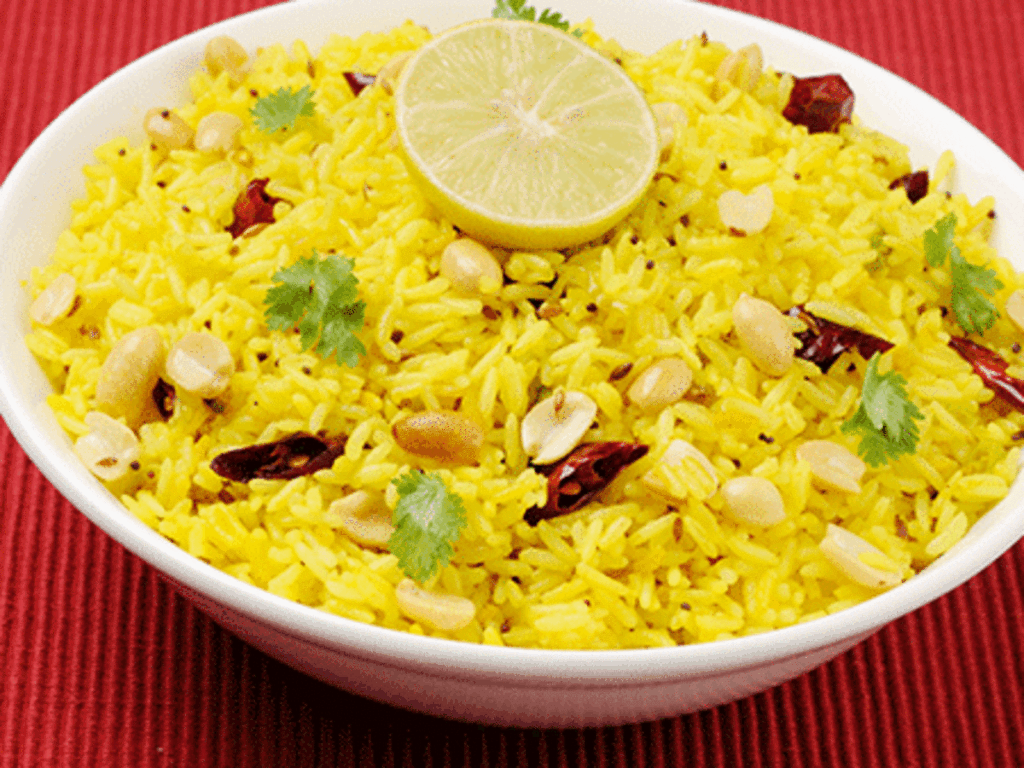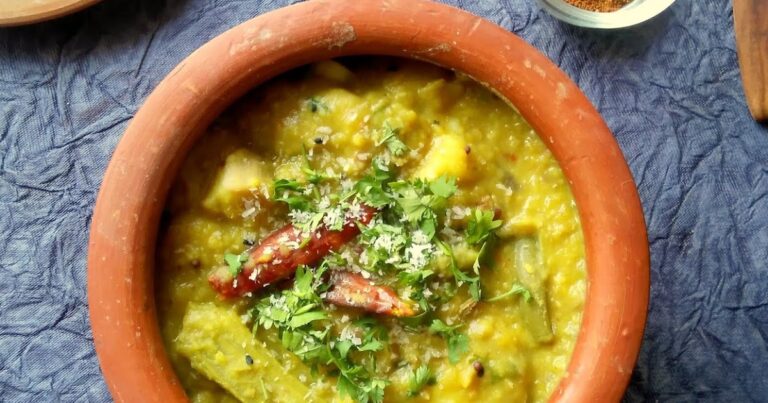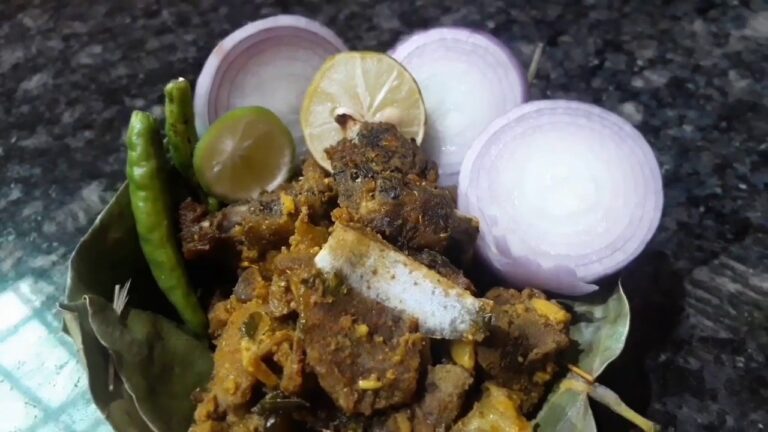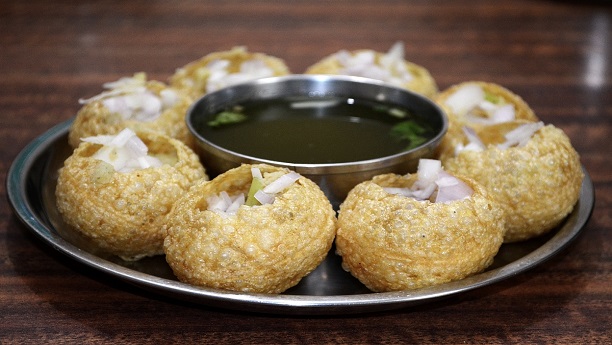Lemon Rice Recipe
Lemon Rice Recipe is a popular South Indian dish that is known for its tangy and refreshing flavors. It is typically made with cooked rice, lemon juice, and a variety of spices and seasonings. The dish is quick and easy to prepare, making it a convenient option for a delicious meal or a side dish. Lemon Rice is often enjoyed as part of a larger meal or as a standalone dish. It can be served with yogurt, raita, or pickles, and is commonly served during festivals, special occasions, or as a part of a packed lunch.
Lemon Rice Recipe usually starts by cooking the rice separately until it’s tender and fully cooked. The cooked rice is then seasoned with a tempering of mustard seeds, cumin seeds, curry leaves, green chilies, and roasted peanuts. Turmeric powder is added for a vibrant color and subtle flavor. Finally, the dish is finished by squeezing fresh lemon juice over the rice, which adds a tangy and citrusy element to the dish.
The amount of lemon juice, spices, and seasonings can be adjusted according to personal preference. Some variations of Lemon Rice Recipe also include ingredients like grated coconut, cashews, or dried fruits for added texture and flavor. Lemon Rice is a versatile dish that can be customized to suit individual tastes. It offers a delightful combination of flavors and textures, making it a popular choice among rice dishes in South India.

Ingredients For Lemon Rice Recipe:
- 1 cup long-grain white rice
- 2 cups water
- 2 tablespoons vegetable oil
- 1 teaspoon mustard seeds
- 1 teaspoon cumin seeds
- 8-10 curry leaves
- 2 green chilies, slit lengthwise (adjust according to your spice preference)
- 1/4 cup roasted peanuts
- 1/4 teaspoon turmeric powder
- Juice of 1 lemon (about 2-3 tablespoons)
- Salt to taste
- Fresh coriander leaves for garnish (optional)
Preparation:
- Rinse the rice under cold water until the water runs clear. This helps remove excess starch.
- In a saucepan, bring 2 cups of water to a boil. Add the rinsed rice to the boiling water and cook until the rice is tender and fully cooked. Drain any excess water and set the cooked rice aside.
- In a large skillet or pan, heat the vegetable oil over medium heat.
- Add the mustard seeds and cumin seeds to the hot oil and let them sizzle for a few seconds until they start to pop.
- Add the curry leaves and green chilies to the skillet and sauté for a minute until fragrant.
- Stir in the roasted peanuts and cook for another minute.
- Reduce the heat to low and add the turmeric powder to the skillet. Mix well to combine all the ingredients.
- Add the cooked rice to the skillet and gently toss it with the spices and peanuts until the rice is evenly coated.
- Squeeze the lemon juice over the rice and season with salt to taste. Mix well to distribute the lemon juice and seasonings evenly.
- Cook the lemon rice for another 2-3 minutes, stirring occasionally to prevent sticking, until everything is well combined and heated through.
- Remove the skillet from the heat. Garnish with fresh coriander leaves, if desired.
- Serve the lemon rice as a flavorful side dish or as a main course with a side of yogurt or raita.
Expert Tips
- Rice: Any non-sticky variety of rice grains can be used in lemon rice recipes. This means you can use short-grained rice or even long-grained rice like basmati.
- Soaking rice: For any rice recipes, I always suggest soaking rice. It helps in cooking rice faster and the rice grains cook beautifully. If you do not soak rice, then increase the cooking time and add a bit more water.
- Overcooked rice: If in case you overcook rice and they become lumpy, then do not worry. Simply break the lumps when the cooked rice is cooled.
- Leftover rice: Some hours old or a day-old leftover rice works excellently in the recipe. Add about 3 to 4 cups of leftover cooked rice.
- Spices and lentils: Spices like mustard seeds and either dry red chilies or green chilies are absolutely needed in chitranna recipe. You can still let go of urad dal and asafoetida (hing) if they are not available to you.
- Herbs: Curry leaves add a unique aroma. If you find it difficult to procure them, then you can skip them. Though I have not added coriander leaves (cilantro), you can add them. About 1 teaspoon of finely chopped ginger also adds a good flavor to the chitranna recipe.
- Nuts: Both cashews and peanuts add a lot of texture and crunch in lemon rice. You can also just use one type of nut. Do not use nuts like almonds, pecans, walnuts etc as the authenticity of the recipe will be lost.
- Lemons: Use lemons which are ripe and fresh. You can also use limes.
- Fats: The fat used to make lemon rice is oil. The oil that is traditionally used is sesame oil made from wood pressed raw sesame seeds. This sesame oil is also called as gingelly oil and is very different from the south-asian toasted sesame oil. Sesame oil adds a great deal of nutty flavor. If you do not have sesame oil, then simply use sunflower oil, peanut oil, avocado oil, grapeseed oil or any neutral oil.
- Gluten-free version: Skip adding the asafoetida or use a gluten-free asafoetida in the recipe.
Preparation Time
The preparation time for Lemon Rice can vary depending on factors such as the cooking method and the individual’s cooking experience. However, on average, it takes about 30-40 minutes to prepare Lemon Rice. Here’s a breakdown of the time involved:
- Cooking the rice: The time required to cook the rice will depend on the specific rice variety and cooking method used. Generally, it takes around 15-20 minutes to cook the rice until tender.
- Preparing the ingredients: This involves gathering and measuring the ingredients, rinsing the rice, and preparing the spices and seasonings. This step usually takes about 5-10 minutes.
- Sautéing and seasoning: The process of tempering the spices, sautéing the ingredients, and mixing in the lemon juice and seasonings typically takes around 10-15 minutes.
Overall, with the rice already cooked, the actual cooking and mixing of the ingredients can be done within 15-25 minutes. It’s important to note that this estimate does not include the time required for any pre-soaking of rice or additional time for cooling the rice before preparation.
Nutritional Value
The nutritional value of Lemon Rice can vary slightly depending on the specific ingredients and proportions used in the recipe. Here is a general overview of the approximate nutritional content of Lemon Rice per serving:
- Serving Size: 1 cup (approximately 200 grams)
Calories: Around 200-250 calories Total Fat: 6-8 grams Saturated Fat: 1-2 grams Cholesterol: 0 milligrams (if prepared without added dairy) Sodium: 300-500 milligrams (may vary based on added salt) Carbohydrates: 35-45 grams Fiber: 2-4 grams Sugar: 1-2 grams Protein: 3-5 grams
These values are estimates and can vary based on the specific ingredients used and portion sizes. The nutritional content may also be affected by any additional ingredients or variations made to the recipe.
It’s worth noting that Lemon Rice is generally a low-fat and vegetarian dish. However, if you add ghee (clarified butter) or other fats to the recipe, the fat content will increase accordingly.
Remember that these values are approximate and it’s always a good idea to refer to specific ingredients and calculate the nutritional content based on the products you use.
Lemon Rice Recipe Video
FAQ
Is it good to eat rice with lemon?
Eating rice with lemon is a matter of personal preference, and it can add a pleasant citrusy flavor to your dish. Lemon juice can help enhance the taste of rice and make it more refreshing. Additionally, the acidity of lemon can help balance out the flavors in a rice-based dish.
What does lemon rice contain?
lemon rice recipe includes a mixture of fried mustard seeds, urad dal (black gram), chilies (hot green peppers), herbs, and spices. This fried tempering mixture is then poured over steamed rice. Fried peanuts and cashews are added, along with lemon juice, and everything is mixed together
How to make rice extra tasty?
using a cooking liquid other than water (bouillon or broth is an easy alternative), or stirring in some fresh herbs, dried fruit, peas, nuts, or other flavor and color boosters.






![Baigan Besara Recipe ( special Baigan dish]](https://odisanow.com/wp-content/uploads/2023/05/Baigan-Besara-1.jpg)